Crampon compatibility is important, but it’s far from the only factor to consider when choosing a suitable mountain boot for Scotland’s winter hills. With 25 winter seasons of guiding and Winter Skills instruction under his belt, Andy Bateman of Scot Mountain Holidays shares what to look for in a reliable winter mountain boot.
Scotland’s winter mountains are as diverse and changeable as the weather that shapes them. Snow conditions can vary dramatically in both type and depth—far more so than any lingering summer snow. Add to that the range of situations where you may encounter snow and ice, and it becomes clear: limiting yourself with the wrong boots could hold you back before you’ve even begun your ascent. Choosing the correct winter boots is essential.
Winter days in Scotland are short, and efficiency is key. Moving quickly and safely saves both energy and time. That’s why sole rigidity is vital.
The rigidity of a winter boot doesn’t come from the sole itself but from the mid-sole. It’s crucial that the boot is stiff both lengthways and across its width. Most modern boots with rigidity in one direction will have it in the other, too.
A stiff sole concentrates your weight effectively, whether you’re cutting into snow and ice or relying on the boot’s grip. Here’s why this matters:
B2 and B3 boots provide superior grip on snow and ice compared to B1 boots. This can mean less reliance on crampons for minor snow cover. Walking in crampons over thinly snow-covered rocks can be awkward and inefficient; in such conditions, a stiff boot often performs best.
Sometimes it’s faster and more practical to kick a few steps into firm snow rather than stop to put on crampons. Flexible B1 boots often don’t hold up here. When you try to kick “pigeon hole” steps, for example, the boot’s toe can bend upward and bounce off the surface instead of cutting in. This isn’t just inefficient—it’s uncomfortable.
In steep terrain, the ability to “front point” safely is essential. B1 boots are often too flexible: the toe bends upward, the heel drops, and the front crampon points can shear out of the snow or ice, increasing the risk of falling backward out of the step.
Crampons are tough pieces of kit, but they’re not indestructible. A flexible boot places unnecessary stress on the crampon, which can weaken it over time and eventually lead to failure. Using a rigid B2 or B3 boot supports your crampons properly, reduces wear, and ensures greater comfort for your feet.
A stiff, well-structured upper is equally important. In softer, more flexible boots, tightening crampon straps can squeeze and restrict your feet. This can reduce blood circulation, leading to cold feet—or worse, frostbite. B2 and B3 boots are built to prevent this, keeping your feet secure but comfortable.
Winter boots are designed with insulation in mind, which is critical for keeping feet warm in sub-zero temperatures. This insulation also tends to add padding, increasing overall comfort during long winter hikes. Cold feet are uncomfortable at best, and at worst, they can lead to injury or frost damage.
Your boots are as much a tool as your axe or crampons when it comes to winter walking. For the Scottish winter mountains, a B3 boot is not overkill—it’s an investment in safety, efficiency, and comfort. While a B1 boot might be adequate for summer treks involving glacier crossings in the Alps or Himalayas, it simply doesn’t offer the necessary performance for Scotland’s unpredictable winter conditions.
Before heading to your local outdoor gear shop, check which staff members are trained in proper boot fitting and when they’ll be available. Taking the time to find the right boots will make all the difference in your winter walking adventures.
If you’re preparing for your first winter trip—or just looking to upgrade your kit—remember: the right boots will let you tackle Scottish winter mountains with confidence. Also you don’t need to commit the first time you are trying out winter walking – you can hire boots to find out if that’s your thing or not.
Ready to hit the hills? Let Scot Mountain Holidays show you the ropes with expert-led Winter Skills courses.
Tips on how to cope with short daylight hours –
As winter cloaks the Highlands in frost and the days grow short, venturing outside for exercise might feel like a tall order. But with a wee bit of planning and a hearty spirit, you can not only keep your fitness ticking along but also revel in the unique beauty of winter in Scotland.
The trick to making the most of winter’s fleeting daylight? Shift your routine to the morning. Greet the day with a brisk walk along a frost-dusted path, a jog through the glens, or even a bit of yoga by the window before heading out. Morning movement doesn’t just get the blood pumping; it also sets you up to soak in those precious hours of Highland daylight.
Over the past 10 years, many yogi have moved to the area so it’s not difficult now to find a yoga class at virtually any time of the day on any day of the week. If you plan to come up to Boat of Garten on one of our trips, or just to stay at the Lodge, please do ask if you’re interested in any group yoga stretches to ease off after a day of activity.
There’s no such thing as bad weather, only unsuitable clothing (even Billy Connolly was known to subscribe to this point of view) —sound advice in these parts! Layer up with a snug thermal base, a mid-layer for warmth, and a weatherproof outer shell to fend off the Highland chill and the occasional rain. With the right kit, even a cold wind feels invigorating, and you’ll be ready to enjoy the crisp air on your adventures.
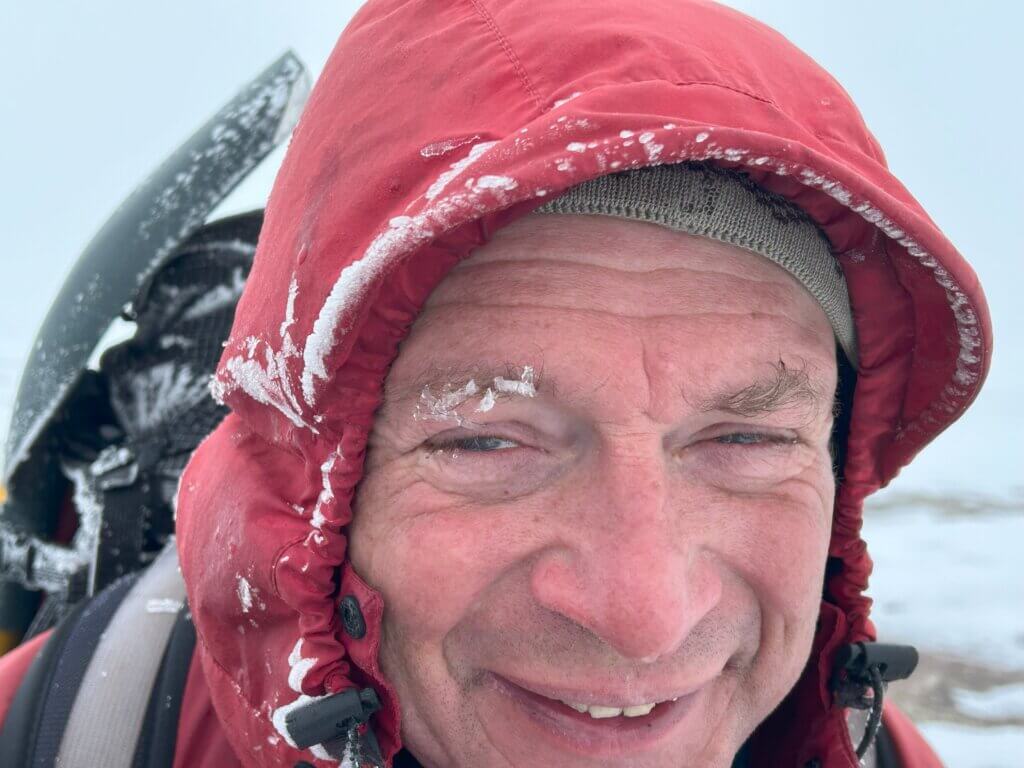
Winter’s shorter days are perfect for discovering seasonal activities. From skiing in the Cairngorms to a gentle skate on a local ice rink (there’s a community ice rink in Aviemore which has been up and running for a couple of years now and there’s also the imitation ice at Loch Insh), there’s no shortage of ways to enjoy the colder months while getting a cracking workout. Plus, there’s nothing quite like the thrill of carving through snow with the mountains as your backdrop. There’s also a lot more to winter sports than the traditional skiing and ice skating. Winter hiking is popular too.
Don’t let daylight pass unnoticed—grab your coat and take a quick stroll during lunch. Even a ten-minute wander can do wonders for your mood. Why not rope in a pal or colleague for a wee walk? It’s a grand way to catch up and get some fresh air, even if the skies are a bit dreich.
The Highlands come into their own at the weekends. Pack a flask, don your boots, and head out to explore your favourite hills or forest trails. Whether it’s a family ramble, a cycle along scenic routes, or a hike with friends, these little excursions will make the most of the light and help banish the winter blues.
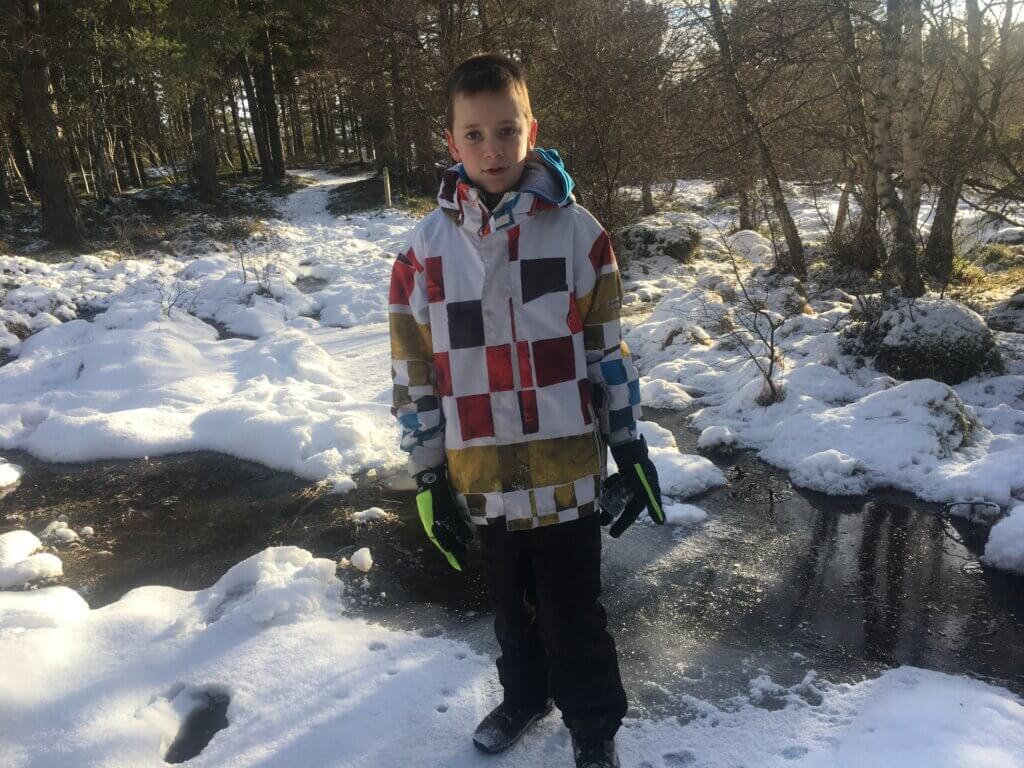
Once night falls, don’t let it hold you back. Embrace the magic of the Highlands by taking to the trails after dark. With a good head torch and reflective gear, you can enjoy a quiet run or a moonlit walk beneath a sky brimming with stars. There’s something quite special about the calm of winter nights, especially if you’re lucky enough to catch the northern lights.
Running in the snow; running in the dark – both have a special kind of magic. It concentrates the silence somehow and makes you feel like the only person in the world. But above all, the most special thing about the longer nights is that it gives a better opportunity to see the northern lights.
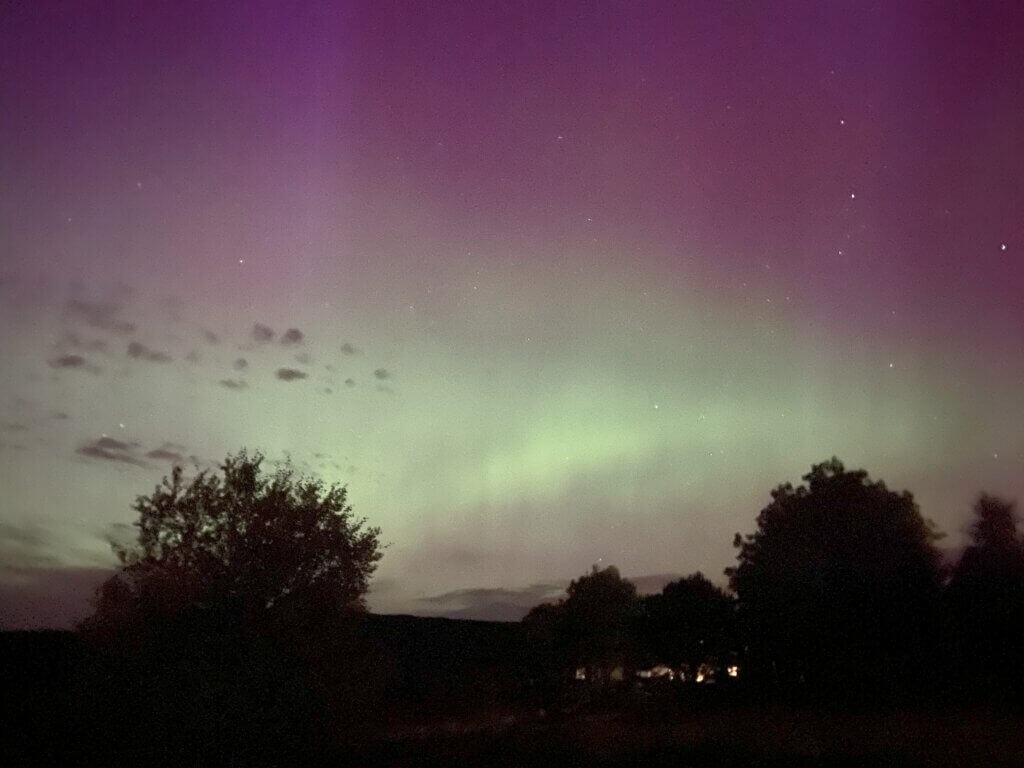
By tweaking your exercise routine and embracing the season, winter can become a time for adventure and well-being. Get out there, breathe in the crisp air, and discover the joy of staying active in this beautiful season. Here in the Highlands, winter isn’t just something to endure—it’s something to celebrate.
Seize the daylight, savour the stillness, and make your winter workouts a source of happiness and vitality. Go on, give it a go—you might just love it!

Andy Bateman has instructed and guided for over 25 winter seasons across Scotland. At times its blue skies and a winter wonderland but being based in the Cairngorms he is no stranger to the sometimes uncompromising conditions that can be encountered on Scotland’s high mountains during the winter months.
Putting aside the obvious need to dress properly for the conditions, here are a few of his expert winter skills tips:
Unless your rucksack has a facility specifically for carrying crampons safely on the outside, they should be in a crampon bag inside your rucksack when not on your boots. They are heavy items of kit and can easily work loose when attached with exterior straps or bungee. Crampons carried on the outside can also be a source of injury for other members of the party e.g. in high winds.
The snow and ice conditions can be as varied as the weather that creates them. Don’t limit the techniques at your disposal before you’ve even set foot on the mountain by wearing bendy boots. A key and often overlooked feature of a stiff boot is that it allows you to concentrate your weight on the edges of the sole so you’re able to use them to cut into the snow surface. Your boot is as much a tool as your ice-axe or crampons. B1 “winter” boots are often too flexible to effectively kick steps in hard snow; if you try to front point, the toes tend to bend up and the heel drops causing the wearer to feel unstable. Fully rigid B3 mountaineering boots don’t feel overkill for a winter mountain walk.

Crampons at work
There are a few situations where a long shaft is an advantage but they are outweighed by the number of situations where a short shafted axe is your best bet. Go for an axe with a relatively straight shaft and no longer than 55cm irrespective of your height.
Remember in winter trekking your rucksack will be heavier, plus the extra weight of winter boots and crampons on your feet, the underfoot conditions and having to check the map more frequently all conspire to slow your pace. On top of this there are fewer daylight hours. It’s important that you’re not over ambitious with your route plan to prevent being caught out. Always make sure you have a decent headtorch.
Your rucksack is already heavier with all the necessary gear required by winter. Heavy boots, crampons and underfoot conditions will sap energy and slow you down. Don’t burden yourself further with superfluous kit by considering whether an item is really necessary for the day. At the same time, be sure you have everything you need.
 Full moon Snow-hole Expedition winter gear
Full moon Snow-hole Expedition winter gearEven with an insulated jacket around the tube, once the temperature drops below -3 deg C hydration bladders tend to easily freeze. You are better off with a water bottle in your sack as close to your back as possible to receive a little body heat. Better still take a thermos flask.
There are situations where an ice axe leash is an advantage but there are also a good number of situations where they can be a hazard. Have an arrangement where the leash can be easily added or removed from the head of the axe, i.e. tie a loop in the end of the leash and larks-foot it through the head of the axe. When you aren’t cutting steps or climbing the leash is probably best kept in your rucksack.
Remember, as your core temperature cools your body reduces its circulation to your extremities, like your hands. If you have cold hands, it may well be worth considering putting an extra layer on, as well as warmer gloves. If the body is compensating for a cooling core, to a certain extent, it doesn’t matter how well insulated your hands are, it’s not going to send anymore warm blood to the extremities.
Your body can burn up 40% more calories just by keeping itself warm. Underfoot conditions and heavy gear add to your body’s energy demands. Standing around for more than 10 minutes can mean folks start to get chilled. Schedule-in regular breaks where possible. I find a 10 min break after approximately every 80 min of walking is optimal. You need good judgement and one of the most sensitive organs in your body to a drop in temperature or a lack of energy is your brain. It needs to be well nourished by both.

Striding out to conquer the winter Cairngorms
Why do it? Because this is why it’s worth it.
Staying warm in the winter mountains is a vital winter skill. Andy Bateman has been guiding for Scot Mountain Holidays more than 25 years, so here are his 21 tips on staying winter warm and surviving the cold…
1, Don’t just think about putting on gloves. Your body conserves the core temperature by restricting the blood circulation to the extremities (e.g. lower limbs, hands & feet). So even though your torso may not necessarily feel cold, still think about adding an extra layer. If your core is “toasty” your body will be happy to send plenty of warm blood to your hands! If it isn’t it doesn’t matter how well insulated your hands are they aren’t going to warm quickly. A warm torso means your hands will be far more resilient against becoming cold.
2, Dress warm on the legs and regulate your body temperature by adding and removing tops. It’s a lot easier to add/remove the latter than it is the former.
3, Try and keep on the move as much as possible since this is the most effective way of re-establishing/maintaining a comfortable temperature in an adequately insulated body.
4, Plan regular but short breaks. You will be burning energy and loosing moisture through breathing and sweating. It needs to be replaced. The first organ in your body to be affected by a lack of either of these is your brain. To stay warm in winter mountains you most definitely need your judgement!
5, Keep breaks brief – to a maximum of 10 mins. Any more than this and you can start to get chilled. I find a good balance is 80 to 110 minutes hiking followed by a 10 minute break. From stopping, eating a sandwich, having a drink, to actually being on the move again, 10 minutes is easily taken up.
6, Rather than adding a warm layer at the exposed summit, think about doing a little before. You them have the last 5 mins of ascent to warm you back up. You may have a terrain feature to shelter behind where as that may not be an option on the summit.
7, Discipline is crucial! Aim to be pro active rather than reactive. Be on top of your game! The first organ in your body to be affected by the cold is your brain and you need your judgement. Don’t fall into of the trap of not wanting to be bothered. Don’t necessarily wait for the next up hill climb to warm you up. Cold and hypothermia are insidious. If you are uncomfortable, seek shelter if it’s close at hand, stop and deal with it! 5 minutes later you’ll be feeling much better. Sadly, people have died from hypothermia whilst carrying enough to probably survive. Don’t let the cold get the better of you!
8, Overheating? Stop and take a layer off. Later on sweaty cloths can have a real chilling effect on the body.
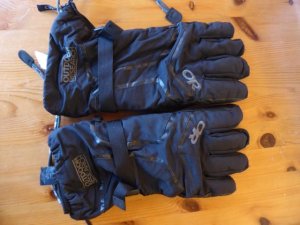
9, Invest in a good pair of winter gloves. Don’t under estimate the agony of sever hot aches! Spending £70 upwards can seem money well spent. Liner gloves keep them hygienic.
10, A spare pair of adequate winter gloves is crucial. A glove can be easily lost in the wind. An unprotected hand in Scotland’s winter mountains can mean frostbite. Dachstein mitts are old school but they are cheap and they have a long established reputation of working in Scotland.
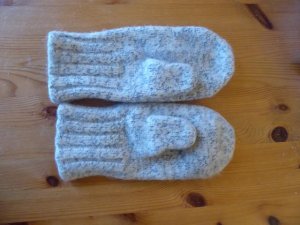
11, Consider purchasing an overlay jacket. It’s a very quick and efficient way to add a very warm layer when you take a break in the winter mountains.
12, Think about packing a vacuum flask of warm drink. If you’re a little chilled, there’s nothing like the uplifting comfort of warm fluid draining down into your core.
13, In the coldest conditions place a neck gaiter over the mouth and breathe through the fabric. It will act as a heat exchanger – extracting heat from the expired air and using it to warm the inhaled air. It can be surprisingly effective!
14, Wear Ski goggles (anti fog). No only do they provide physical protection for the eyes but they also help to keep the face a lot warmer.
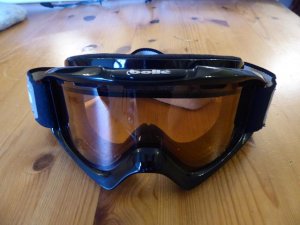
15, You will be often wear your waterproofs as much for windproofing as you will for waterproofing. Remember increasing wind has more effective on wind chill than dropping temperature.
16, Use the terrain to give you shelter from the wind if you can e.g. walk down the lee side of a ridge.
17, Winter boots – Apart from the vital requirement of being adequately stiff, proper winter mountain boots will generally be better insulated.
18, Wear warm (winter) hiking socks and make sure your boots are large enough to accommodate them without impinging your circulation.
19, Gaiters – You need to make sure snow doesn’t go in over the tops of your boots. It’s one of the best ways to get wet (and possibly cold) feet. Generally, I’m not a great fan but in winter some type of gaiter is a necessity. Internal gaiters in some leg wear, in my experience haven’t been up to the job. When interlaced with an appropriately sized conventional gaiter though, they provided a very secure closure.
20, Some insulating (duvet) jackets have such a light drape that when you add another layer over the top the air is squashed out of the insulation thus greatly reducing their warmth. Some of them simply don’t have enough insulation in them to be winter warm. I tend to carry a thick fleece that doesn’t compress and still works well when wet.
21, Wear the right fabrics. Do your research and avoid hydrophilic fabrics like cotton which looses a lot of its insulation when wet.
There are a lot of gear options on the market. What works for you is not necessarily what works for your friends, but there will definitely be something out on the market which will be good for you. Remember when you go out on the hill make sure you have enough clothing to keep you warm when you need to stop. In winter, you can’t often stop for long to eat and definitely need to think long and hard about when you’re going to add/subtract layers. The key is not to put off any decisions and if you’re out with others, don’t be shy about asking for help.
All content © Copyright Scot Mountain Holidays 2025
Responsive web design by Summit Web Solutions